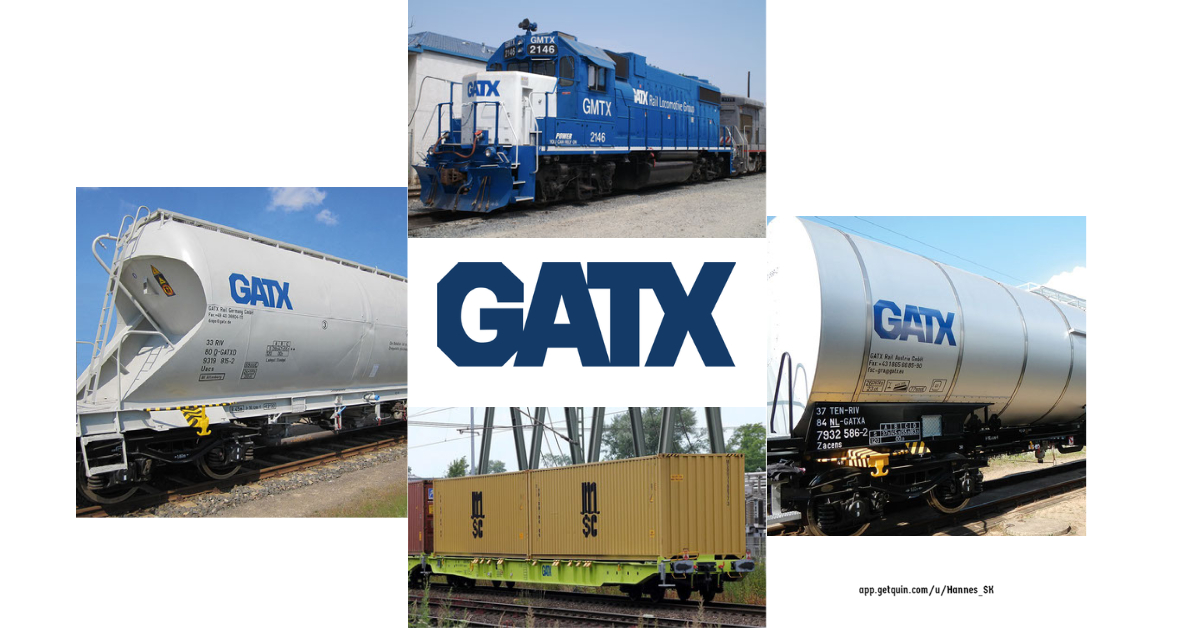Got on the wrong track?! - I think not.
Hello,
For a long time I was unsure about building up further positions even outside my actual investment sector. So I actually researched for weeks about the most promising opportunities within the logistics industry, outside Europe.
In the end, I was forced to look only at North America. The U.S. logistics companies are out of the question for me, since I actively manage the S&P 500 as an ETF. These positions are therefore covered.
That leaves Canada and Mexico.
Thus I selected now between 3 considerable shares of the regions and came to the selection between Canadian Pacific $CP , Canadian National $CNR (-1.27%) and Grupo Mexico $GMEXICOB (-3.25%) as parent of Ferromex (railroad company of Mexico). To further spread my country risk, I decided to include only one Canadian and the Mexican only under circumstances.
So the following is my background on Canada:
CNR vs. CP
Financial comparison:
The individual data can be seen everywhere. Therefore, I do not want to go into it explicitly here.
Crucial for me:
CNR has a market capitalization of about €74 billion and a milder valuation with a P/E ratio of about 22 than CP with a market capitalization of €65 billion and a P/E ratio of almost 28.
The margins are quite similar at about 50% EBITDA on a rough average until 2016. So no big qualitative difference either.
So I came to the conclusion that the financial prospects respectively could not give me any insight. So I researched further.
The route network and the rivalry between the railroad companies.
Both are Canadian "class one" railroads. So both must generate gross revenues of at least $250 million in the last two fiscal years. No problem for such giants. So you have a total of 7 companies in this class in the USA and Canada.
So I compared the route network.
CP has a route network of about 13,000 miles, or about 21,000km. The network runs along the Canadian major industrial centers from Vancouver to Montreal in Canada, as well as in the northern USA in the former "Rust Belt" along the Great Lakes and major commercial hubs in the Midwest. The busiest route is Calgary - Vancouver.
CNR has a larger route network of about 32,000km from Halifax in the east to Vancouver in the west. Here, too, the most important Canadian industrial metropolises are located along the routes. In the USA, on the other hand, the company has an even greater presence. Here, too, the company is represented along the metropolises of the former "Rust Belt" and along the Mississippi River as far as southern Alabama.
Theoretically, CNR would be able to declare the point for itself in this category.
So I went a decisive step further:
The most important corporate hubs.
Along CNR's route network are major U.S. metropolitan areas and transshipment hubs, such as Chicago, Memphis and New Orleans. Canadian main transshipment points represent Halifax, Montreal, Toronto, Winnipeg, Edmonton, Vancouver and Prince Rupert.
Especially the connection between the western port metropolises Vancouver and Prince Rupert, as well as the southern port place New Orleans and the east coast with Halifax represents the main trade connections of the world within its own network.
Thus, Canada represents the internal trade center to the world. If we now take the average economic growth of Canada in comparison with the USA as a starting point, there is definitely a need to catch up. Especially with regard to announced investments of international corporations in affected regions.
With the takeover of Kansas City Southern, CP can build on a comprehensive rail network that extends into the depths of Mexico. It also gives access to New York City, a global trading center, and Calgary, Canada's metropolis of the future. Furthermore, Vancouver, Winnipeg, Toronto and Chicago are also accessible. However, since these are also to be named as trading centers at CNR, the difference in this respect is marginal and negligible. In particular, however, the depth of the route through the merger now enables completely new trading perspectives.
In particular, the route network of Kansas City Southern Railway now has a huge impact on the freight-rich American southern states of Louisiana, Texas and Mississippi. Beyond that, into the depths of Mexico.
The "Inflation reduction act" and its conceivable effects.
Hardly any other topic moved the U.S. stock markets in 2022 as much as the adoption of a gigantic subsidy package for the U.S. economy. Recognized goal of this: A sustained reduction in emissions and inflation combined with a new economic miracle. As a result, many international corporations have already made decisions to open new factories in the USA. This should strengthen the future securing of freight traffic. In particular, the southern states of the USA and the border regions to Mexico should benefit massively from short supply chains and renewable energy in the future, but still stimulate the transnational intermodals.
So in the course of that, I now decided to do CP. At this point I would like to @Gerit thank you. The great inspiration made me think about rail transport as an investment option.
.
Furthermore I decided to place 2 limit purchases on Grupo Mexico. The overall ratio in the rail sector for the portfolio should be 2/3 CP and 1/3 GM.
Grupo Mexico is not only the largest mining group in Mexico and therefore the third largest copper producer in the world. The subsidiary of Ferromex is also in the portfolio. This is the largest Mexican railroad company.
Thus, two factors that will gain importance in the future. Copper is and will remain an indispensable component of future technologies.
In summary, with the addition of these two stocks in combination with the S&P 500, I now have a replica in the portfolio of the almost complete rail network of North America.
However, neither is in the portfolio yet. The plan is to build a savings plan over 10 months on CP. The first execution has already taken place. However, the ISIN change is now imminent, which is why it is paused until it is available again.


















